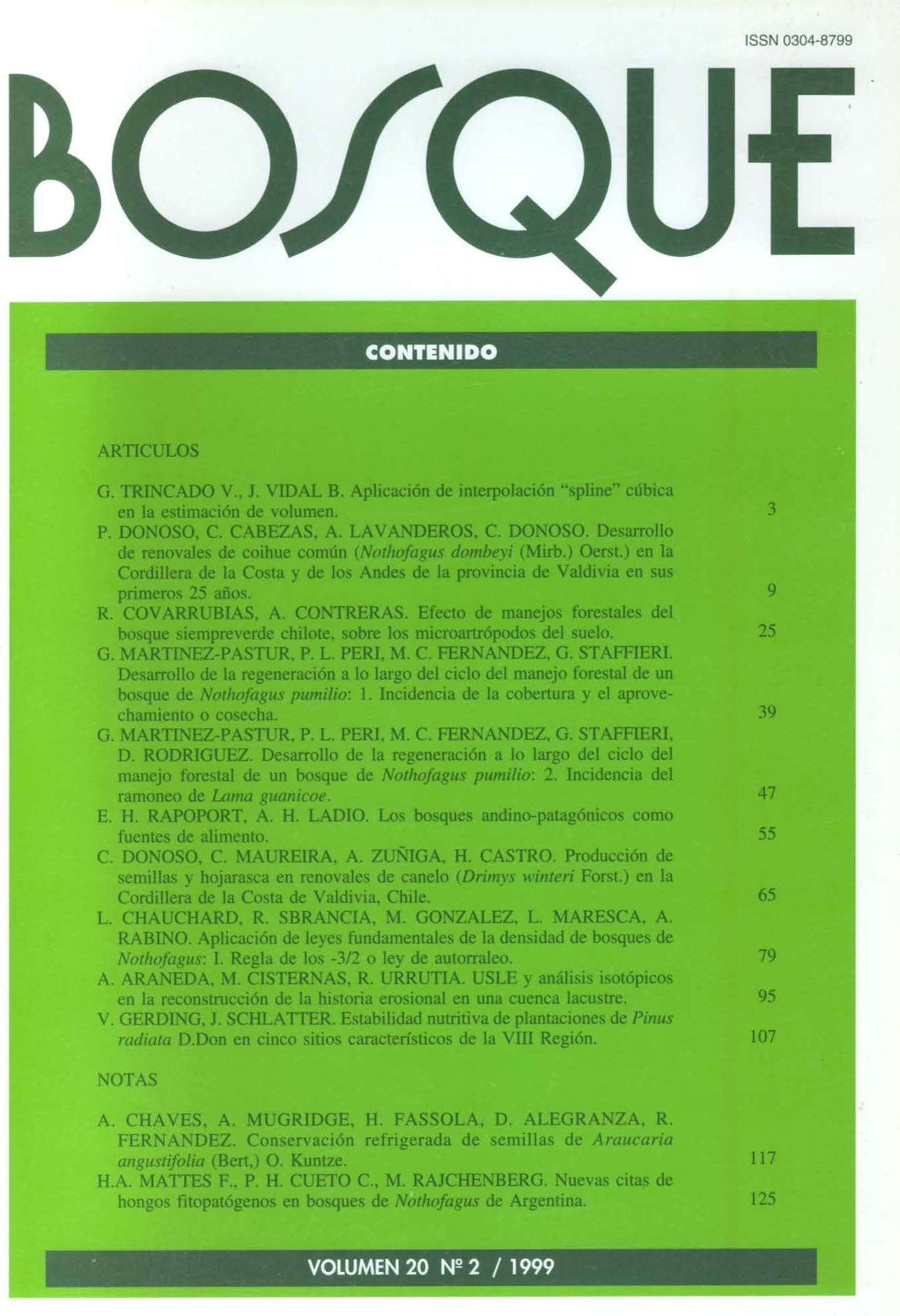Main Article Content
Dec 31, 1999
Abstract
Two Nothofagus dombeyi (Mirb.) Oerst. second growth stands located in the province of Valdivia (Chile), one in the coastal range and the other in the Andean range, were compared in terms of structure, quality and growth. The coastal stand had an average age of 27 years (20-33), and the Andean stand 23 years (17-27). At these ages the Andean stand had more number of trees (5425 trees/ha vs. 3146 trees/ha) and a similar basal area (47 m2 /ha vs. 45 m 2 /ha) compared to the coastal stand. It is believed that at time of initiation the number of trees was also larger in the Andean stand. For this reason the coastal stand has had a better diameter growth (0.47 cm/yr vs. 0.43 cm/yr). The better height growth (0.62 m/yr vs. 0.44 m/yr) in the coastal stand could have been affected by density. Yet, the soil characteristics and the higher carrying capacity of the Andean site support the idea of a better site in the Andes. Basal area growth has been better in the Andean stand, and volume growth has levelled-off around 20 m3 / ha/yr, after age 20 in each stand. Although site quality is better in the Andean stand, both have sufficient number of trees and a great potential to conduct silvicultural treatments in them.


